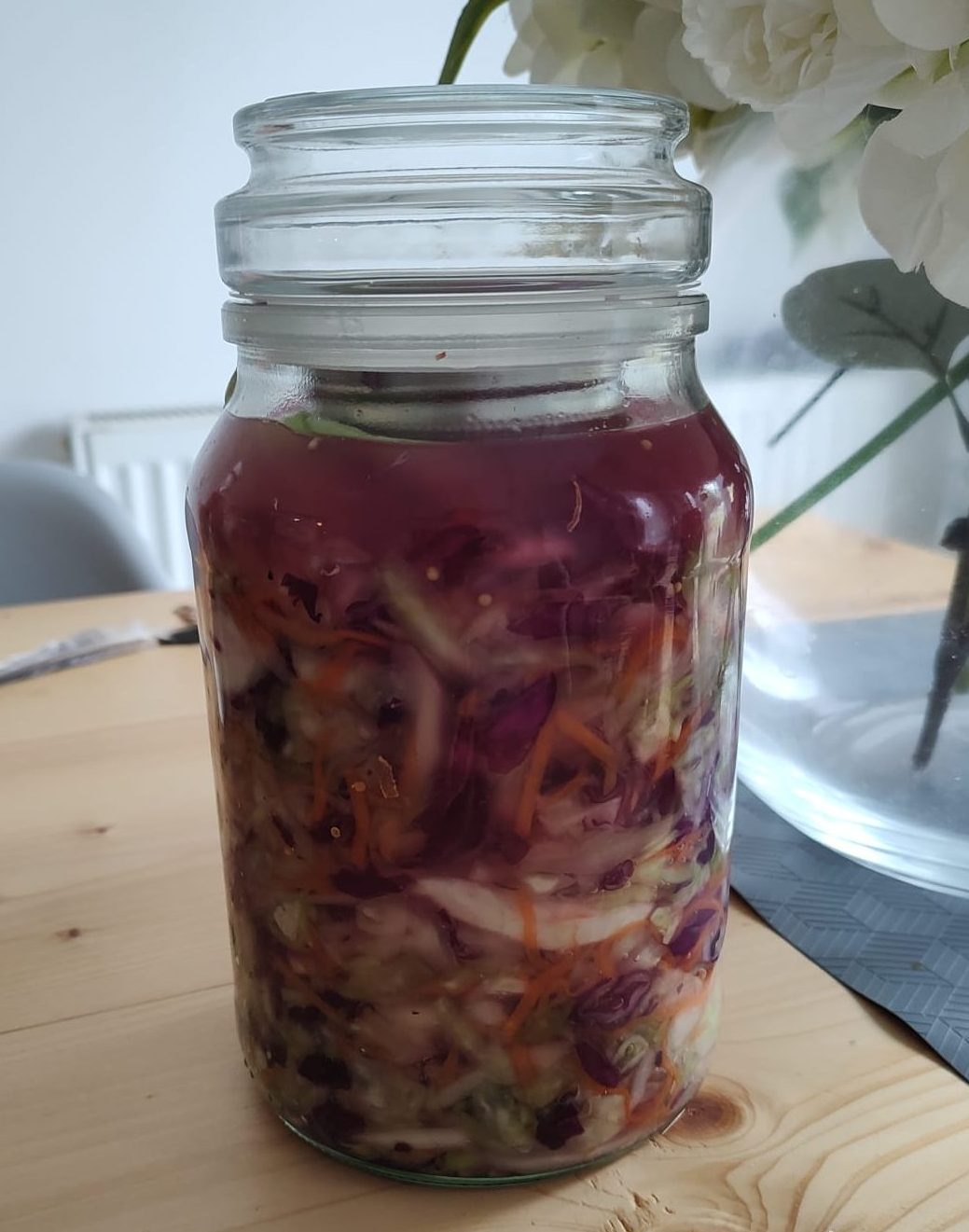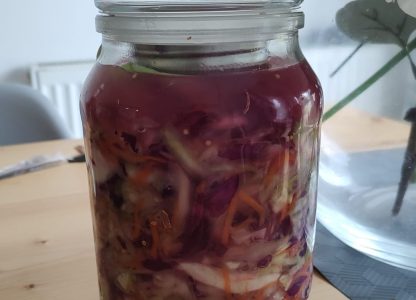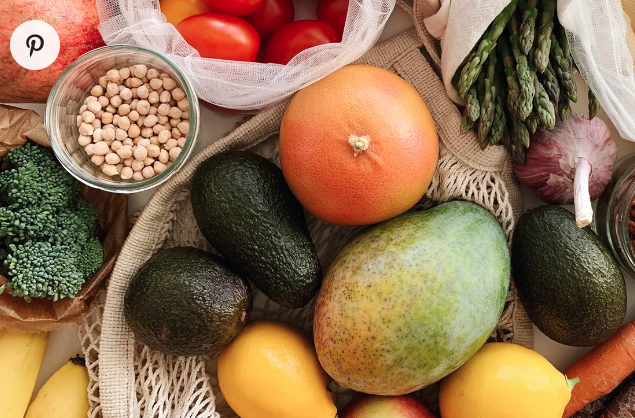Number 1: There are smarter people than me…
There are plenty of smarter people than me to tell you about fermented food – more specifically lacto-fermented anaerobic food. Sander Kratz and Mike Greenfield over at ProHomeCooks.com two very amenable and informative commentators. Then there is an interest in foraging – oyster, berries, elder flower gin last year and this year blackberry red wine vinegar that connects.
16.08.23: Swinging back around to earlier posts, most draw on the the 3Es and 3Ls – “explore, experiment, educate,” “”longer, larger, liquid” and I am adding subheading where I can.
Fermentation – and preservation
So it starts with a line of enquiry, an “explore,” which is often coupled with an explore and educate – a podcast on the morning walk, onto a little research, find a “who’s who” and listen or read or watch what they have to say. Then read a more serious post or few. Both Dr Spector and Mosley signpost fermented foods. Onto Sandor Katz and then Mike from Pro Home Cooks.
Mike’s “The Complete Beginner’s Guide to (lacto) Fermenting Foods at Home” – is a great opener. His full fermentation playlist is here. Other preservation methods (drying, salting, pickling, drying, salting, smoking, sugar and alcohol and freezing) will have to wait. And yes, he has a vinegar video.
Number 2: Why fermented foods?
Very simply – fermented foods are:
- A great way to introduce a healthier and more diverse gut microbiome
- Have greater nutritional value.
- The fermentation process makes the nutrients more bioavailable.
- Once prepped (which was a lot of fun), stored in the fridge, they offer an instant taste blast to meal times (last night I enjoyed some with my burger).
You want the science? Head over to ZOE. In short, many fermented foods contain probiotics (not all). Probiotics are foods with living microbes that improve digestion and lower your risk for certain diseases, like type 2 diabetes and heart disease. On sauerkraut specifically, the microbes in sauerkraut may help lower cholesterol and also provide fiber, vitamins C and B6, and iron
Number 3: How to – in a few words as possible
- Wash tools / vessel with soap, very hot water, dry with a clean towel
- Prepared ‘freshest’ raw produce – explore the cutting size and shape – keep them uniform
- Submerge in 2.5% salt brine – 2 grams of salt for every 100 grams of water
- Different salts different flavours
- Keep everything below the water line using a fermentation weight – a boiled rock, cabbage leaf, empty weight jar or a food bag with water
- Leave space at the top of the vessel – the contents will increase in volume as CO2 is produced
- Airlock lids are available
- Cover loosely with a lid – do not tighten the lid completely
- Label and date each ferment
- Ferment in a cool and dark spot – 4 days minimum – to 1-3 weeks
- The longer that you leave it out, the more probiotics develop as does the flavour.
- Once you like the taste – move it to cold storage (slowing the ferment down)
- It should last a long time, longer than it takes to eat it!
- Check daily and “burp” (open the lid) to release CO2 if needed
- Check for discoloration, mold, yeast, or off-smells – see “trouble shooting”
- It’s okay to taste your ferment to check how it’s progressing – use a clean utensil
Number 4: Trouble shooting
- Brine becomes cloudy: This is normal. It is the bacteria doing their job creating lactic acid
- White film forms on the surface of the brine.
- Kahm yeast will not hurt you but it will make your ferment yeasty tasting and soft. Skim it off – most likely, too much oxygen is present
- Red, pink, or black mold – toss it all into your compost
- Slimy / soft vegetables – possibly fermented at too high a temperature, not enough salt or the produce was not fresh enough
- Nothing is happening: Too cold or too much salt?
Number 5: Nutrition and wellness
See Number 2. Second, it was a lot of fun making, burping and checking on the sauerkraut and eating it!
- Don’t go all out eating your fermented foods. Slow and steady.
- Start with 1-2 tablespoons per day for a week, slowly increase how much you can eat.




Pingback: Why “whole-foods” and “plant based” – but “not only” – Edventures
Pingback: Treat your bread like wine – Edventures